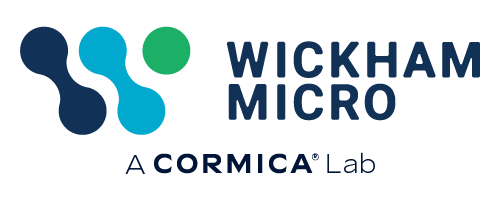The cytotoxicity test is used as a precursor to toxicology work, assessing materials for an initial cytotoxic response in an effort to avoid unnecessary in vivo testing. Our experts can offer two methods depending upon the nature of the medical device material:
Agar Diffusion Method
The Agar Overlay test is a qualitative test that involves indirect exposure of monolayer cells to the test material by adding a layer of agar. The cushioning effect of the agar protects the cell line from mechanical damage and allows diffusion of leachable materials from the test item. The degree of reactivity around and under the sample is determined by the reactivity zone. The reactivity is recorded as non-cytotoxic, slightly cytotoxic, mildly cytotoxic, moderately cytotoxic or severely cytotoxic (Grade 0-4).
Extraction/Elution Method
The extraction (elution) test is designed to imitate as far as possible the end use of the device and thereby establish whether leachable substances, if present will cause cytotoxic effect on monolayer cells. Incubation is continued for 24 hours in ISO 10993-5 and 48 hours for USP 87, after which the cells are scored for abnormalities or deaths as a percentage compared to the cell control. The number and size of the plaques is then estimated and recorded semi-quantitatively as non-cytotoxic, slightly cytotoxic, mildly cytotoxic, moderately cytotoxic or severely cytotoxic (Grade 0-4).
Testing by extraction method
- Suitable for most medical devices which may be tested as composite or individual components.
- Cell monolayers are directly exposed to test and control material by means of fluid extracts.
- Include morphological changes or appearance of cellular contents in test and control material.
- A change in appearance records a positive cytotoxic reaction.
Testing by agar diffusion method
- Indirect method suitable for testing transparent materials.
- Examples of materials that can be tested include contact lenses or flat clear plastic.
- Liquid/cream material can be applied to a square of filter paper for testing.
- Cell monolayer is cushioned with an agar overlay, on which test and control articles are placed.
- Extractables from the sample will migrate through the agar layer to the cell monolayer.
- Any cytotoxicity will create visible disruption to the cell layer directly below the test article position.
To discuss Cytotoxicity Testing Methods for your requirements, please contact us on +44 (0)1329 226600 or by filling out our contact form.
Cytotoxicity Testing FAQ
Why are L929 cells used in this testing?
The L929 cells are derived from mouse connective tissue. These cells are used in this testing due to them having a long-life span, are easily cultured, thus making them an ideal cellular model. The cell line is anchorage-independent, suspension adapted cell line that is maintained in continuous suspension culture. The L292 cells is one of the first cell lines to be established in continuous culture.
How do you determine how long extraction time is?
The extraction time is determined by how long the medical device will have contact with the patient. Medical devices that have limited contact with the patient would be extracted for 24 hours. Those that have limited contact with intact skin or mucosa and are not implanted only have a 4-hour contact time. Medical devices with prolonged contact greater than 24 hours will be extracted for 72 hours.
What grading is a cytotoxic effect?
As per ISO 10993-5 and USP-NF<87>, an achievement of greater than 2, is considered a cytotoxic effect.
What controls are included in the cytotoxicity test?
Along with the test item, Positive, negative and cell culture controls are evaluated with each assay. The positive control material chosen provides a reproducible cytotoxic response. The negative control does not cause a cytotoxic response and is used to demonstrate the background response of the cells.
What extraction vehicle is used?
Culture medium with Foetal Bovine serum is used and is the preferred extraction vehicle, due to its ability to support cell culture and extract both polar and non-polar substances. The extraction is performed in sterile and inert containers.
Why is cytotoxicity testing required?
Cytotoxicity data is assessed in relation to other biocompatibility data to determine if the product is suitable for intended use.
Please note that we are able to advise on the appropriate testing route for our clients to take and can outsource additional tests to several preferred sub-contractors if required.
If you would like to discuss our services today, please get in touch with us by filling out our contact form or call us directly on +44 (0)1329 226600.










